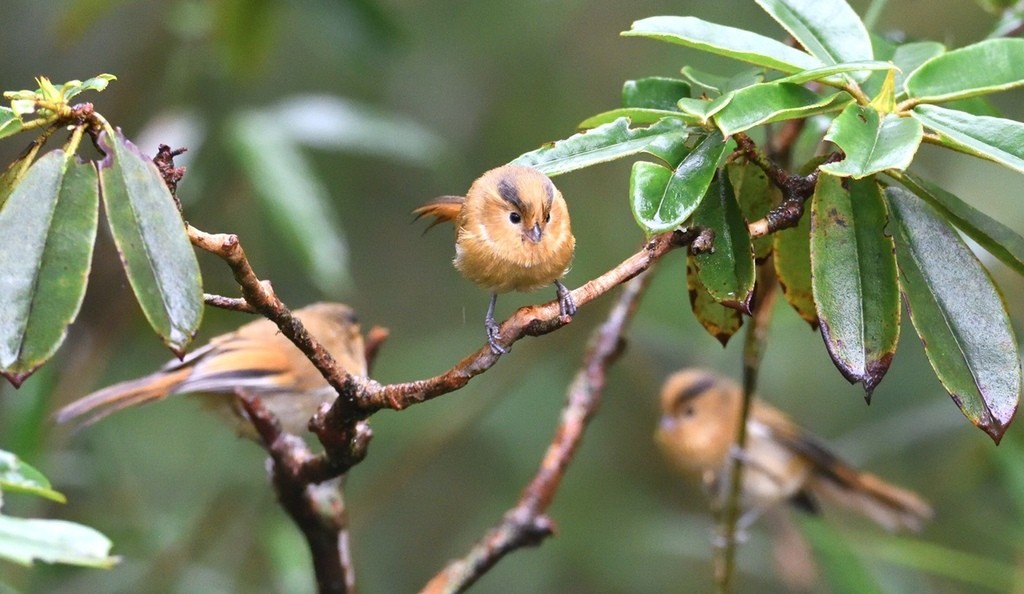Fulvous Parrotbill
A species of Small Yellowish Parrotbills Scientific name : Suthora fulvifrons Genus : Small Yellowish Parrotbills
Fulvous Parrotbill, A species of Small Yellowish Parrotbills
Botanical name: Suthora fulvifrons
Genus: Small Yellowish Parrotbills
Content
Description General Info
 Photo By microraptorshen , used under CC-BY-NC-4.0 /Cropped and compressed from original
Photo By microraptorshen , used under CC-BY-NC-4.0 /Cropped and compressed from original Description
The species is small, 12 to 12.5 cm (4.7–4.9 in) in length. The plumage of the nominate is dominated by a rich buff head, upper wing coverts, flanks, rump and tail. The belly is white and the face is dominated by a black stripe above the eye that gets larger towards the middle and then smaller again, and a faint white stripe below the face. The sexes are alike the juvenile resembles the adult but is darker, particularly below. P. f. chayulensis has a paler belly than the nominate, P. f. albifacies has a darker stripe above the eye, and P. f. cyanophrys has a blue-grey eyestripe and brighter plumage overall. 
Size
13 cm
Nest Placement
Tree
Feeding Habits
Fulvous Parrotbill's diet includes bamboo and birch buds, small seeds, and insects, along with some grit for digestion. These birds forage in groups, sometimes with 20-30 individuals, swiftly moving and probing unopened bamboo sheaths for food.
Habitat
The habitat of fulvous Parrotbill includes dense bamboo areas often adjacent to forested regions. These birds inhabit environments where bamboo is a dominant feature, and they are known to venture occasionally into nearby low vegetation. The broader geographical zones for fulvous Parrotbill's habitat span regions where these bamboo and forest ecosystems intersect.
Dite type
Insectivorous
General Info
Feeding Habits
Bird food type
Behavior
The fulvous parrotbill feeds on the buds of bamboo and birches, as well as tiny seeds and insects. In order to aid the digestion of their food they will swallow grit to act as a gizzard stone. When not breeding they will form flocks of up to 20 or 30 birds. The nests of the fulvous parrotbill are bowl-shaped and built by both parents from bamboo leaves, rootlets and mosses. They are placed in dense stands of bamboo, between 0.7–1.9 m (2.3–6.2 ft) off the ground. The average clutch size is around 3.3 eggs, which are pale blue. Both parents incubate the eggs and care for the nestlings. Nesting success is low, possibly because of human disturbance. 
Distribution Area
The fulvous parrotbill is a bamboo specialist, exclusively living on dense stands of bamboo in or near forests. It lives in montane stands, ranging from 2,440–3,660 m (8,010–12,010 ft), most commonly above 2,700 m (8,900 ft) but sometimes down to 1,700 m (5,600 ft). The species is not thought to be migratory. 